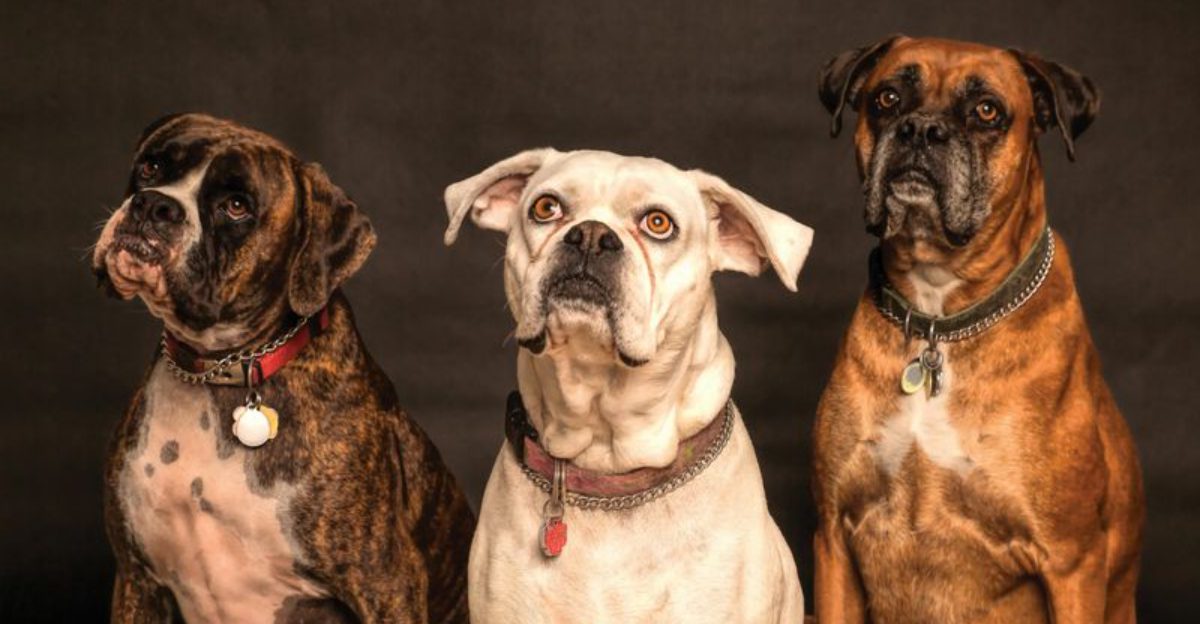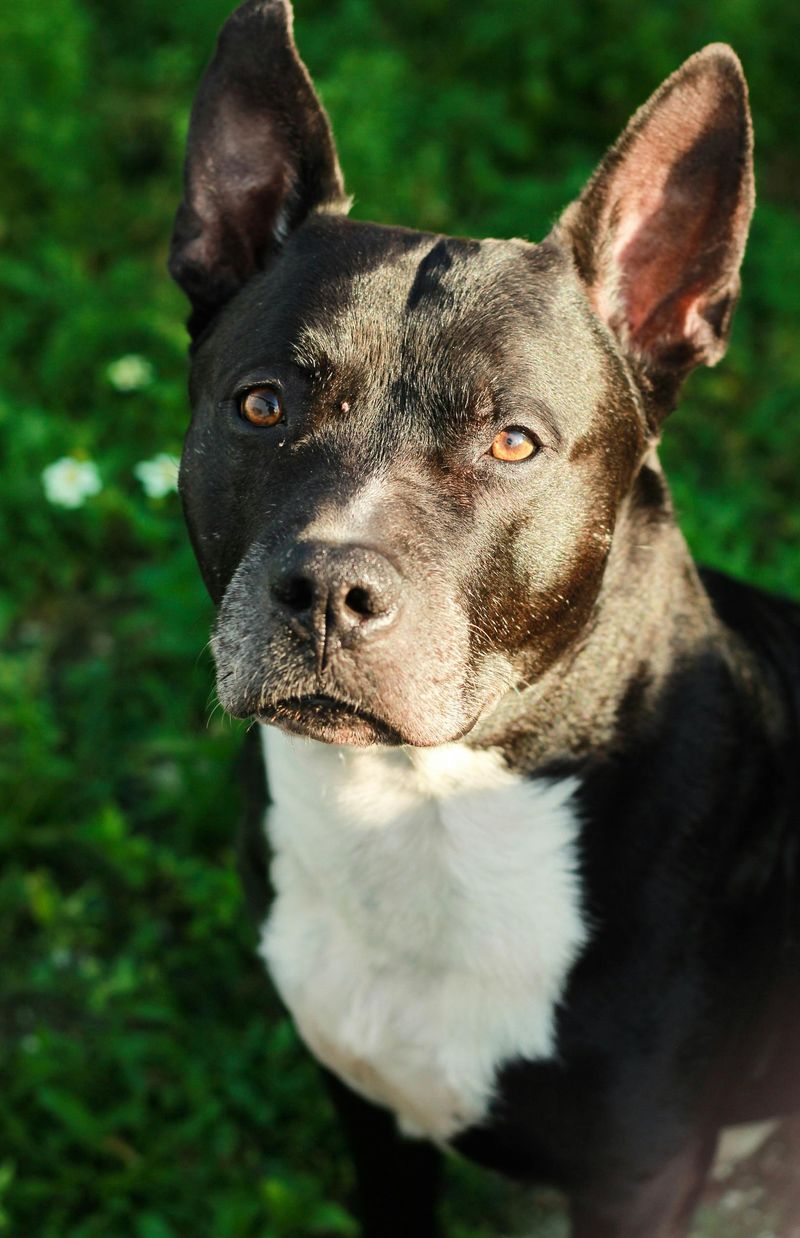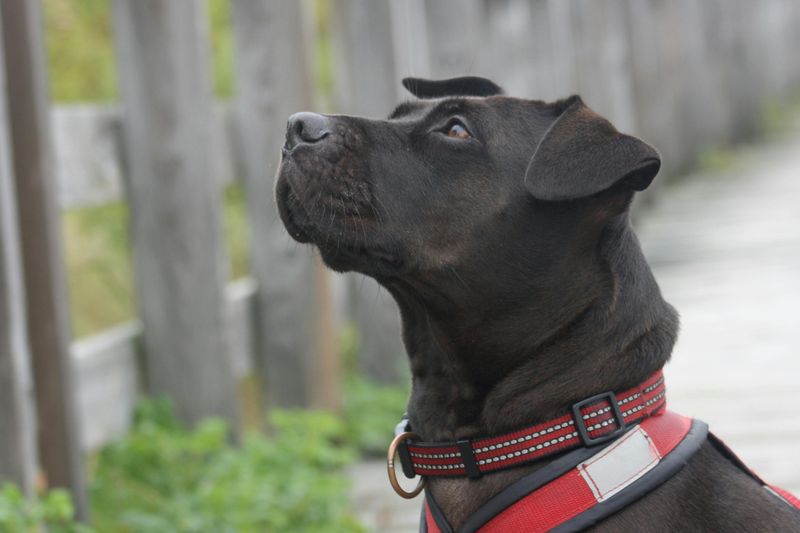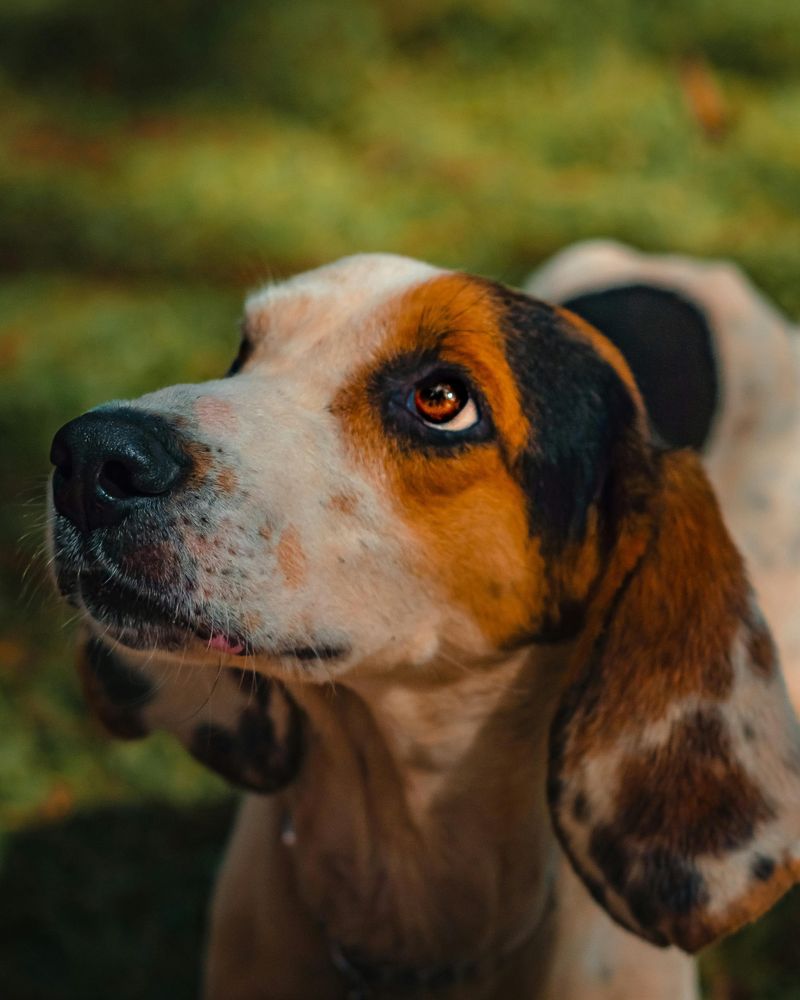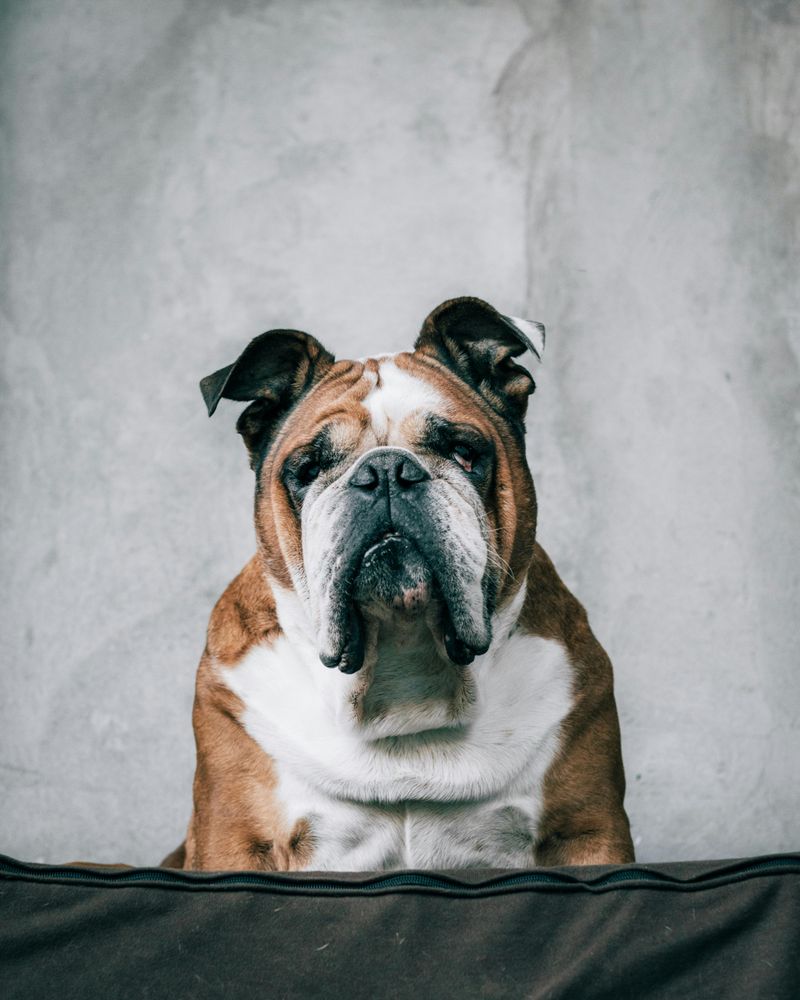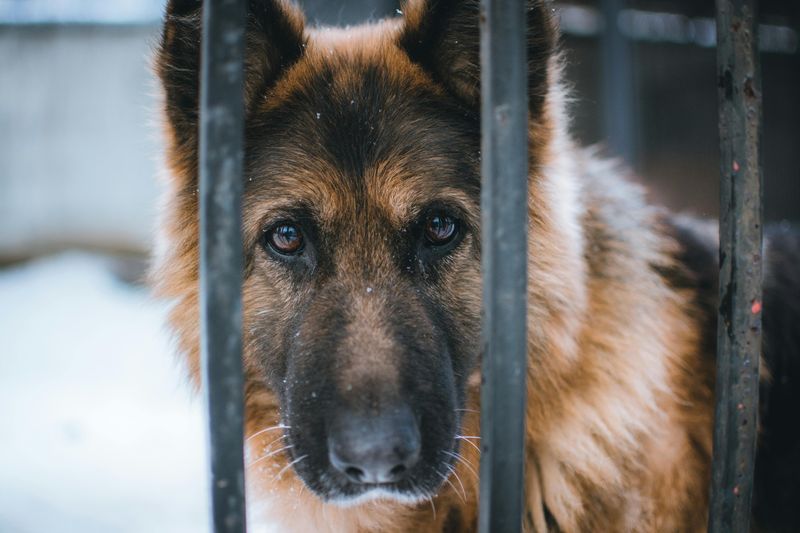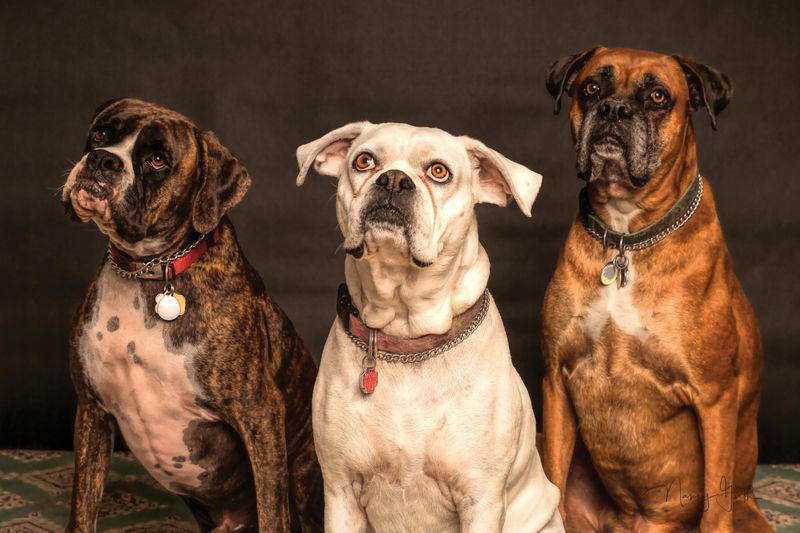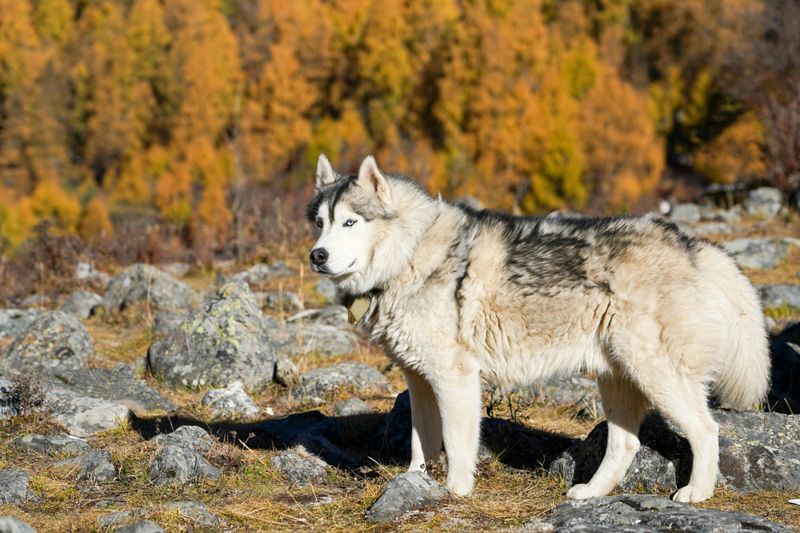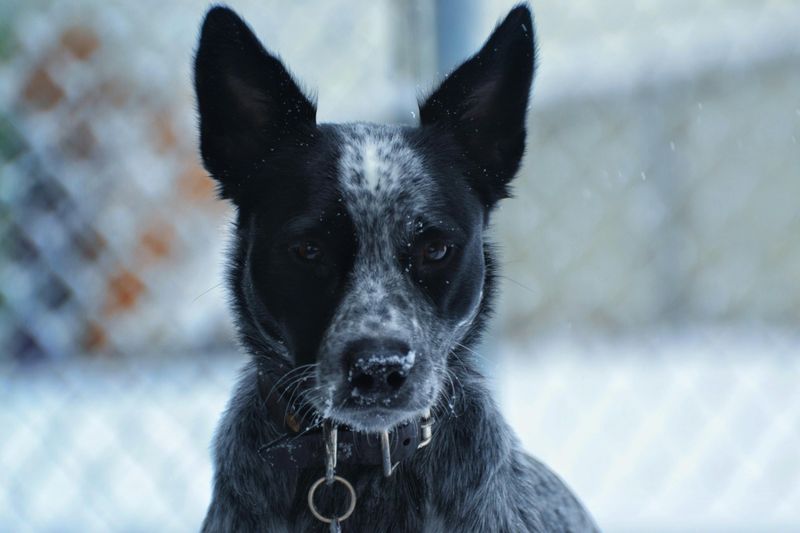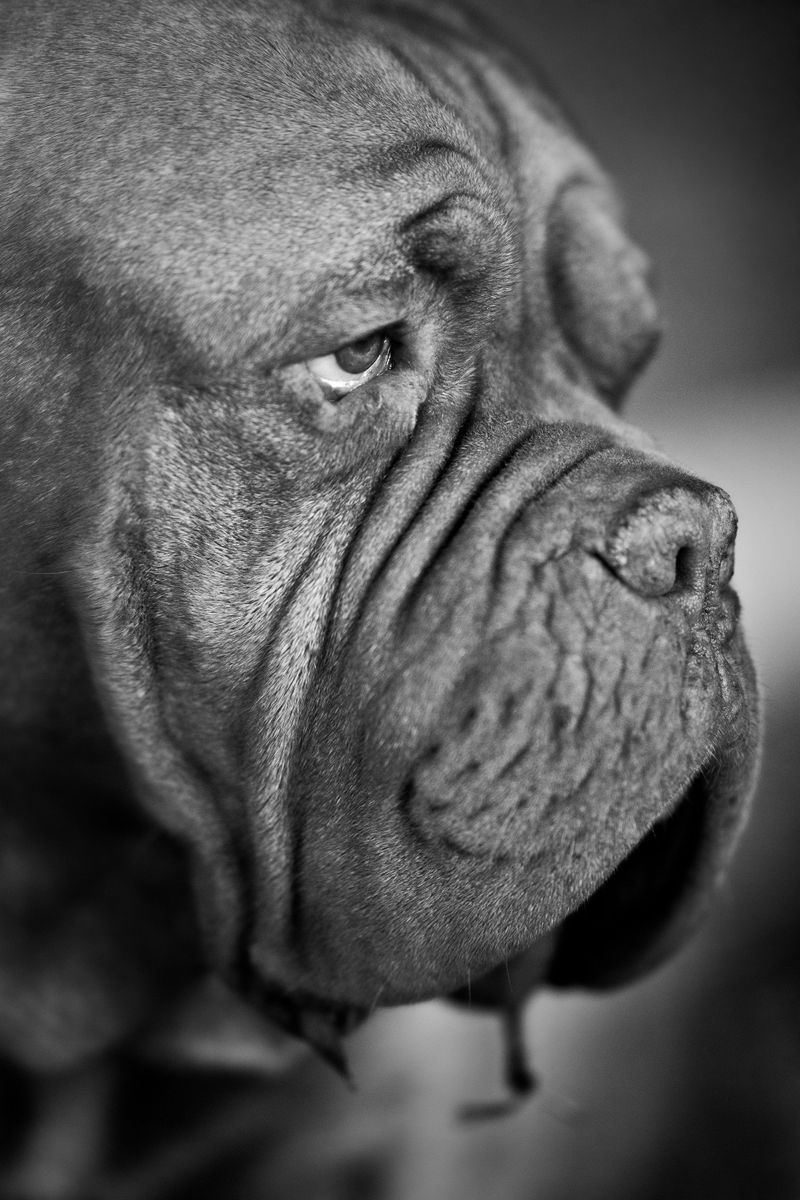Shelters are full of wonderful dogs who get passed by for reasons that have nothing to do with their hearts. Myths, misunderstandings, and trends often hide incredible companions in plain sight. Today, we’re spotlighting the breeds that wait the longest—and why they might be perfect for you. If you’re ready to discover loyal, trainable, and deeply grateful pets, read on and meet your new best friend.
American Staffordshire Terrier
American Staffordshire Terriers are powerfully built but far gentler than their reputation suggests. Many end up in shelters due to breed stigma rather than behavior. In reality, they thrive on structure, positive reinforcement, and regular exercise. Their loyalty is legendary, and they bond deeply with their people. With early socialization, they can be polite city dogs or energetic hiking partners. They’re usually eager to learn, food motivated, and delight in interactive play. Consistent training and mental enrichment are key. Families willing to advocate for them often find a cuddly couch companion. Give them patience and purpose; you’ll gain steadfast devotion.
Black Labrador Mixes
Black Labrador mixes often blend into the background of busy kennels, a phenomenon sometimes called “black dog syndrome.” Despite their classic good nature, their dark coats don’t always photograph well, leading to fewer clicks and visits. Many are gregarious, food-motivated learners with an eagerness to please. They excel in family environments, jogging routines, and adventure trips. Enrichment like scent games and puzzle feeders channels their energy. They typically get along with kids and other dogs when properly introduced. Regular training keeps manners polished. If you want a versatile, affectionate companion, don’t scroll past the black-coated gem waiting patiently for you.
Senior Dogs (All Breeds)
Senior dogs sit unnoticed while puppies get the spotlight, yet they’re often the easiest companions. Their exercise needs are moderate, they’re usually house-trained, and they appreciate quiet routines. Medical concerns can be manageable with preventative care and regular checkups. Seniors offer a calm presence, deep eye contact, and quick gratitude for comfort. They’re exceptional companions for work-from-home owners or retirees. Short walks, cozy beds, and gentle playtime keep them content. Many arrive with basic manners and settled personalities. Adopting a senior saves a life and fills your home with unhurried love, reminding you that every day together truly matters.
Hounds (Coonhounds & Foxhounds)
Hounds are melodic, nose-driven athletes frequently overlooked for their vocal nature. In truth, their baying can be managed with exercise, scent work, and training. They’re affectionate, goofy, and deeply bonded to their families. Long walks and sniffari outings satisfy their instincts and reduce restlessness. Many thrive in homes with secure yards and structured routines. They respond well to positive reinforcement, especially when rewards are sniff-based games. Gentle leadership builds trust faster than force. If you love outdoor adventures and laughter, a hound’s heart and humor will win you over. Give them patience, and they’ll give endless tail wags.
Bulldogs (English & American)
Bulldogs often linger due to concerns about health costs and exercise tolerance. While responsible care is essential, many lead comfortable lives with weight management, moderate activity, and routine vet care. They’re affectionate couch companions who relish short strolls and belly rubs. Bulldogs bond closely and can be wonderfully gentle with children. Training should be positive and brief—these charmers can be stubborn yet food motivated. Climate control and skin-fold hygiene are important, but manageable. Adoptive families who embrace low-impact fun are rewarded with snorts, smiles, and unwavering loyalty. Don’t mistake their nap-loving style for low spirit—these dogs adore their people.
Chihuahuas
Chihuahuas are plentiful in shelters, often misunderstood as snappy or overly fragile. With patient handling and confidence-building, they become affectionate lapdogs and lively companions. Their small size makes them ideal for apartment living, yet they still need training and enrichment. Socialization and gentle boundaries curb nervous behaviors. Warm clothing and cozy beds keep them comfortable. They bond strongly to their person and love routine. Short training sessions and puzzle toys keep minds sharp. If you’ll move slowly and respect their size, you’ll discover a big personality in a tiny body—devoted, portable, and full of heart.
German Shepherds
German Shepherds often enter shelters due to unmet training needs and high energy. These brilliant workers crave mental challenges and consistent leadership. With structured routines, they excel at obedience, scent work, and enrichment tasks. They’re loyal protectors who thrive when given jobs and clear expectations. Early socialization reduces reactivity, while decompression time helps them settle post-adoption. They need daily exercise, brain games, and kind, firm guidance. When matched with active, engaged owners, Shepherds become breathtaking partners. If you’re up for training and teamwork, you’ll unlock a devoted, versatile companion ready to learn, serve, and love wholeheartedly.
Boxers
Boxers are exuberant clowns with energy to spare, sometimes overwhelming potential adopters. Beneath the bounce is a sensitive, people-focused dog who thrives on interactive exercise and training. Boxers do well with agility, flirt poles, and structured play. Positive reinforcement builds impulse control without dampening spirit. They prefer companionship and can struggle if left bored. Mental puzzles and daily routines help them settle. Health-wise, responsible vet care and proper diet support longevity. If you enjoy laughter, activity, and affectionate snuggles, a Boxer will meet you with wiggles and wide smiles. Give them purpose, and they’ll give endless joy.
Shar-Pei
Shar-Pei dogs can be overlooked due to their stoic nature and unique care needs. Their independence reads as aloofness in kennels, but they bond strongly once trust forms. Skin and ear care, along with quality diet, helps them thrive. They benefit from respectful training and clear boundaries. Moderate exercise and mental work suit their thoughtful temperament. They’re loyal, protective, and often quiet at home. With patient socialization, they coexist well with family routines. For adopters who appreciate subtle affection and dignified companionship, a Shar-Pei offers steady loyalty wrapped in velvet wrinkles and quiet devotion.
Sighthounds (Greyhounds & Lurchers)
Sighthounds are graceful, low-drama companions that paradoxically get overlooked. People assume they need marathon runs, yet many are champion couch potatoes with short sprint needs. Their sensitive nature shines with gentle handling and calm environments. A secure yard or leash is essential due to chase instincts. They’re clean, quiet, and often easy to house-train. Soft beds and fitted coats keep them cozy. Training should be light and positive, building trust. If you value serenity, elegance, and affectionate lean-ins, a sighthound might be your dream match—athletic when asked, blissfully mellow the rest of the day.
Husky and Malamute Mixes
Arctic breeds and mixes are gorgeous yet frequently returned due to energy and escape-artist tendencies. They thrive with vigorous exercise, structured routines, and secure fencing. Mental work like canicross cues, nose games, and trick training channels drive. They’re social, vocal, and happiest with active families. Grooming is manageable with regular brushing during seasonal sheds. These dogs need companionship and boredom-busting outlets. Positive, consistent training prevents mischief. If you love outdoor adventures and teamwork, a husky-type mix will reward you with sparkling eyes, comedic chatter, and endless enthusiasm for life’s next expedition.
Cattle Dogs (Heelers)
Cattle dogs are whip-smart herders who flounder without jobs. In shelters, their intensity can be misread as hyperactivity. They excel when given training goals, from obedience to disc and scent work. Daily exercise, enrichment, and clear boundaries are essential. Heelers bond fiercely with their person and thrive on teamwork. They can be mouthy or nippy without guidance, so structured play matters. Apartment life is possible with dedication. If you want a thinking partner who learns fast and loves hard, a heeler will meet you head-on—ready to work, focus, and curl up after a job well done.
Dogo Argentino
Dogo Argentinos linger due to size, strength, and breed misconceptions. Yet with experienced owners, they’re stable, affectionate athletes. Early socialization, obedience foundations, and impulse control are nonnegotiable. They flourish with structured exercise, mental work, and clear leadership rooted in kindness. Secure containment and thoughtful introductions are important. They can excel in scent work and advanced training sports. Health and temperament screening from rescues help match appropriately. For committed adopters who value routine and responsibility, the Dogo offers loyalty, courage, and a surprisingly tender affection at home.
Large Mixed-Breed “Blocky Head” Dogs
Big mixed-breed dogs with broad heads often face unfair assumptions about behavior. In reality, most are affectionate companions with varied, family-friendly traits. They’re overlooked because labels like “bully mix” trigger bias and rental hurdles. Meet-and-greets reveal cuddly personalities and wiggle butts. With basic training, enrichment, and regular walks, they thrive. Many are resilient, eager learners who love toys and human attention. Ask volunteers for temperament notes and playgroup videos. You might discover the perfect all-purpose dog hiding behind an unhelpful stereotype and a very photogenic smile.
